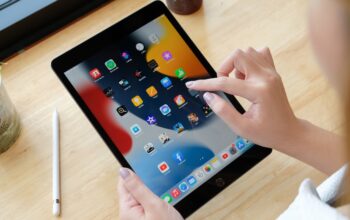Introduction
Medical devices play a critical role in modern healthcare, contributing to the prevention, diagnosis, treatment, and monitoring of various medical conditions. Over the years, advancements in technology and engineering have revolutionized the medical device industry, improving patient outcomes, enhancing efficiency, and transforming healthcare practices. This article explores the evolution, types, benefits, challenges, and future prospects of medical devices, showcasing their significant impact on the healthcare landscape.
Evolution of Medical Devices
1.1 Ancient Origins: The history of medical devices dates back to ancient times, where rudimentary tools were used for surgery, such as bone needles and forceps made from animal bones. While basic, these early devices laid the groundwork for future innovations in medical technology.
1.2 The Renaissance of Medical Devices: The Renaissance period witnessed advancements in medical instruments and devices, including the invention of the stethoscope, which transformed the diagnosis of heart and lung conditions.
1.3 The Industrial Revolution and Beyond: The Industrial Revolution brought about a surge in medical device innovation, with the development of X-ray machines, thermometers, and syringes. As technology continued to advance, the 20th century witnessed the rise of more complex and sophisticated medical devices, such as pacemakers, MRI machines, and prosthetic limbs.
Types of Medical Devices
2.1 Diagnostic Devices: These devices aid in the detection and diagnosis of medical conditions, ranging from simple tools like thermometers and blood pressure monitors to advanced imaging devices like X-rays, CT scans, and ultrasound machines.
2.2 Therapeutic Devices: Therapeutic medical devices encompass a wide range of tools used for treatment, including surgical instruments, infusion pumps, pacemakers, and artificial organs.
2.3 Monitoring Devices: Monitoring devices continuously track vital signs and other health parameters, such as heart rate monitors, glucose monitors for diabetes management, and sleep apnea monitoring devices.
2.4 Assisting Devices: Assisting devices help individuals with disabilities or mobility challenges, such as hearing aids, mobility scooters, and prosthetic limbs.
Benefits of Medical Devices
3.1 Improved Patient Outcomes: Medical devices have significantly improved patient outcomes by enabling earlier and more accurate diagnoses, targeted treatments, and minimally invasive procedures, reducing the risk of complications.
3.2 Enhanced Efficiency in Healthcare: Medical devices have streamlined healthcare processes, leading to quicker and more efficient patient care. Devices like electronic health records (EHRs) and telemedicine platforms have facilitated remote consultations and smoother information exchange between healthcare professionals.
3.3 Personalized Medicine: Advancements in medical devices, such as genetic testing and wearable health monitors, have paved the way for personalized medicine. Tailoring treatments to individual patient’s needs and genetic profiles has become a reality.
3.4 Extended Life Expectancy: Medical devices like pacemakers, artificial heart valves, and insulin pumps have played a crucial role in extending the lifespan and improving the quality of life for patients with chronic conditions.
Challenges in Medical Device Development
4.1 Regulatory Hurdles: The medical device industry is subject to stringent regulations to ensure patient safety and device efficacy. Obtaining regulatory approvals can be a lengthy and expensive process for manufacturers.
4.2 Data Security and Privacy Concerns: With the increasing connectivity of medical devices to the internet (Internet of Medical Things, IoMT), there are concerns regarding data breaches and patient privacy. Securing medical device data is paramount to protect patient information.
4.3 Cost and Accessibility: Some cutting-edge medical devices can be expensive, limiting access to advanced healthcare for underserved populations. Striking a balance between innovation and affordability is a challenge.
4.4 User-Friendly Design: Medical devices should be user-friendly for both healthcare professionals and patients. Designing devices that are easy to operate and understand can enhance their effectiveness.
Future Prospects of Medical Devices
5.1 Integration of Artificial Intelligence (AI): AI-powered medical devices hold great promise in improving diagnostics, treatment planning, and patient monitoring. AI algorithms can analyze vast amounts of data and provide insights to healthcare providers.
5.2 Nanotechnology: Nanotechnology is revolutionizing medical devices, enabling the development of nano-scale sensors, drug delivery systems, and tissue engineering techniques.
5.3 3D Printing: 3D printing has the potential to revolutionize medical device manufacturing. Customized implants, prosthetics, and surgical models can be created with greater precision and cost-effectiveness.
5.4 Remote Monitoring and Telemedicine: The growth of remote patient monitoring and telemedicine will continue, allowing patients to manage chronic conditions from the comfort of their homes and reducing the burden on healthcare facilities.
Conclusion
Medical devices have come a long way, from simple tools to sophisticated technologies that shape the future of healthcare. Advancements in medical device development have led to better patient outcomes, increased efficiency, and personalized medicine. However, challenges related to regulation, data security, accessibility, and usability must be addressed to fully realize the potential of medical devices. The continued integration of AI, nanotechnology, and 3D printing offers exciting prospects for the future of medical devices, promising even more transformative impacts on healthcare and patient well-being. As technology continues to evolve, the medical device industry will remain at the forefront of healthcare innovation, paving the way for a healthier and brighter future.



